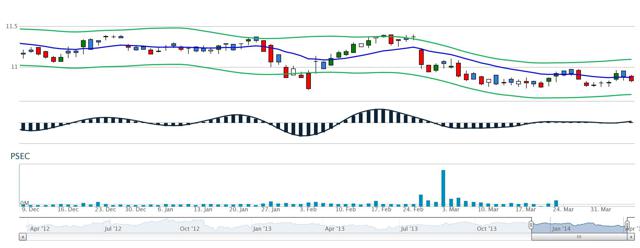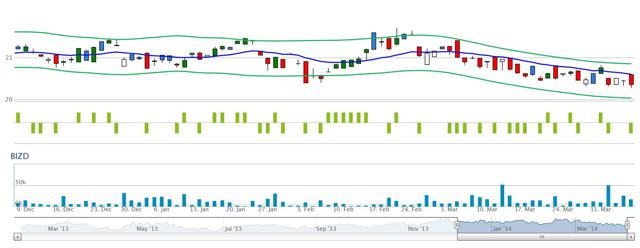Summary
- Prospect Capital continues to hold its position as a top-notch business development company.
- Recent strategies indicate plans to move back toward its core strategies.
- Alternative stock selections are present for those looking for broader access to BDCs.
In the current market environment, there are many small and medium sized companies that have trouble gaining the requisite attention or in securing favorable terms in bank lending arrangement. For these reasons, business development companies (BDCs) are not only an essential part of the market but should continue to see sustainable performances in stock valuations, as well. One of the strongest choices in this space is Prospect Capital (NASDAQ:PSEC), which has shown tremendous growth over the last three years and continues to build on the strategies that has made it one of the most stable choices in the market.
For investors that are most focused on dividends, it is difficult to ignore the BDC space as most of the best investments opportunities come from the fact that corporate taxes can be avoided when added income is allowed to flow to shareholders. But it is important to remember that for those that are reluctant to establish large positions directly in PSEC itself, there are also more conservative, more diversified options that can be used to express some of the same views. Here, we will highlight some of the strengths of PSEC and additional ways investors can gain broad exposure to the stock -- and to the sector as a whole.
Re-focusing on Core Strategies at Prospect Capital
(chart source: OT Signals)
“One of the bigger stories for Prospect in recent quarters has been its various entrances into different sections of the market,” said Sam Kikla, markets analyst at BestCredit. “A key example here can be found in arrangement to structure favorable financing arrangements from Freddie Mac and Fannie Mae as a means for supporting its investments in real estate.” More recently, we have seen indications that Prospect is increasingly interested in directing its attention back toward its core businesses and focusing on areas like senior unsecured debt. Dividend investors are most likely to be drawn into the stock because of its massive 12.3% annual dividend payout. Of course, there is nothing wrong with this. But the company’s growth prospects should not be ignored, either and most of these recent strategy moves lend support to the positive outlook.
Prospect’s loan originations reached a record of $1.3 billion in Q1 2014, soundly surpassing the results for Q4 2013 ($607 million), and the company will likely show the improvements from these positive results during the second quarter of this year. Going forward, success in the next few quarterly reports will likely rest on Prospect’s involvement with the recapitalization of Harbortouch Payments and support for refinancing programs at IWCO Direct. These investments will give Prospect added exposure in businesses that could prove to be highly profitable over the next few years and Prospect’s strong performance record (no non-performing loans in more than five years) all point to a very strong outlook for the remainder of the year.
Alternative Exposure with BIZD
(chart source: OT Signals)
For dividend investors, Prospect Capital offers a lot of reasons to get excited. But for those that are interested in the stock and are still looking for broad exposure to the BDC space as a whole, a suitable alternative can be found in the Market Vectors BDC Income ETF (NYSEARCA:BIZD) which offers well-diversified access to 28 BDCs. Prospect Capital is included in the mix, and other notable examples can be seen in names like Ares Capital (NASDAQ:ARCC), which is one of the most stable names in the space. Ares Capital has over $8 billion in reported assets and has directed its attention at a large number of industry segments, with investment exposure in nearly 200 companies.
This added diversification comes at a price, however, as shareholders in this stock receive a lower annual dividend payout at 8.7%. By extension, those choosing to invest in BIZD will likely experience lower price volatility when compared to those investing directly in PSEC. Dividend yields in BIZD are currently seen at 6.3% but while this is well below what is offered to PSEC shareholders, it is still very attractive when looking at the market as a whole. In all, each of these selections offers its individual merits. Prospect Capital continues to build on its strengths in moving back toward its core strategies, but keep in mind that there is more than one way for dividend investors to express this view.



